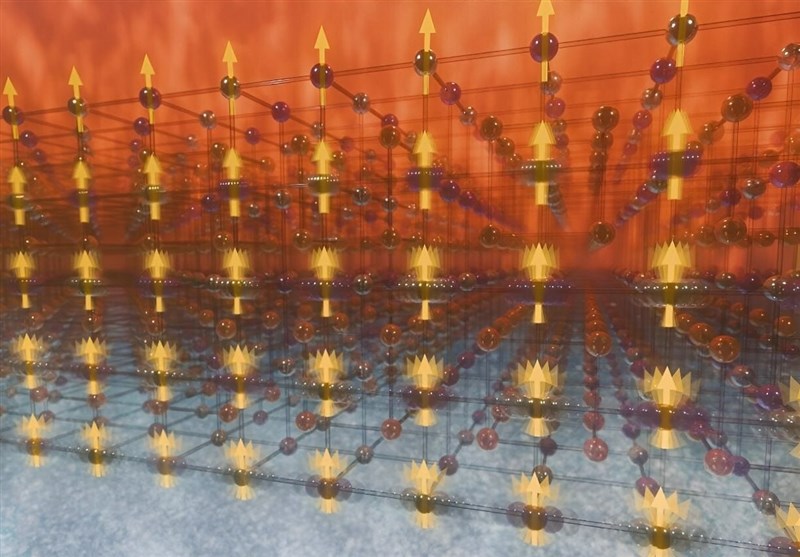Scientists Probe Chilling Behavior of Promising Solid-State Cooling Material
TEHRAN (Tasnim) – A research team led by the Department of Energy's Oak Ridge National Laboratory has made a breakthrough in understanding atomic-scale heat motion, promising advancements in solid-state cooling technology.
The new insights hold potential for enhancing materials used in solid-state cooling, an environmentally friendly innovation capable of efficiently chilling everyday items such as food, vehicles, and electronics without traditional refrigerants or moving parts, according to ScienceDaily.
This system operates via a compact, lightweight mechanism that allows precise temperature control.
Although improved materials and higher-quality devices are already promoting the growth of this cooling method, a deeper understanding of material enhancements is essential.
The research team employed a suite of neutron-scattering instruments to study at the atomic scale a material considered optimal for solid-state cooling.
This material, a nickel-cobalt-manganese-indium magnetic shape-memory alloy, can be deformed and returned to its original shape by driving it through a phase transition, either by increasing temperature or applying a magnetic field.
When subjected to a magnetic field, the material undergoes a magnetic and structural phase transition, absorbing and releasing heat—a behavior known as the magnetocaloric effect.
In solid-state cooling applications, this effect is harnessed for refrigeration.
A key characteristic of the material is its proximity to disordered conditions known as ferroic glassy states, which enhance its ability to store and release heat.
In small regions within the material, magnons (spin waves) and phonons (vibrations) couple in a synchronized dance.
The researchers discovered that these localized hybrid magnon-phonon modes significantly alter the material's thermal properties when influenced by a magnetic field.
These changes can result in fundamental alterations in the material's properties and behavior, allowing them to be tuned and tailored.
"Neutron scattering shows that the cooling capacity of the magnetic shape-memory alloy is tripled by the heat contained within these local magnon-phonon hybrid modes that form because of the disorder in the system," said ORNL's Michael Manley, the leader of the study.
"This finding reveals a path to make better materials for solid-state cooling applications for societal needs."
The studied alloy is near conditions known as spin glass and strain glass—unconventional phases of matter characterized by a lack of order.
In the spin glass phase, magnetic moments are randomly oriented, while in the strain glass phase, the atomic lattice is strained in an irregular pattern.
These frustrated conditions arise from competing interactions that prevent the material from achieving a stable ordered state.
"As the material approaches this frustrated state, the amount of heat being stored increases," Manley explained.
"Long- and short-range interactions manifest as localized vibrations and spin waves, trapping heat in small regions.
Changing the magnetic field triggers another phase transition, releasing this heat."
Controlling the functions of the magnetic shape-memory alloy to act as a heat sponge could enable efficient solid-state cooling without traditional refrigerants or mechanical components.





